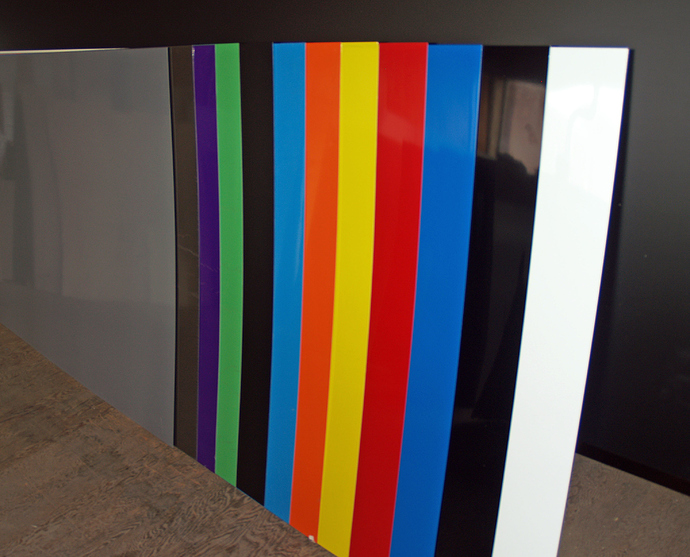Im new to graphic design ive been doing layered vinyl for a few years and have started using a wideformat inkjet printer my question is this I do a lot of race cars and they use colored aluminum and I cant seem to get any of my colors to exactly match is there icc files I need to find and if so where and how would I find them?
My guess would be a lot of these colored aluminum pieces are out of your print Gamut. In which case i dont think anything from the ICC is going to help you. You might be able to slightly broaden your CMYK gamut with a better profile, but if you’re trying to match a custom paint color (particularly one well out of gamut) there wont be much you can do.
You’ll find deep blues, vibrant oranges, neons and metallics to be well out scope.
What machines are you using? and what colors are you trying to hit?
You are trying to match Anodized Aluminum?
If so you won’t even be able to use a spectrophotometer on that.
While it’s somewhat possible to come fairly close by using a chrome vinyl on a solvent inkjet, it’s a lot of trial and error. Then you have to have a white ink capability to print the actual emblem or whatever onto the chrome.
I guess my question would be why aren’t you cutting out the parts that are supposed to be car metal?
ICC profiles only go so far. If you are relying solely on ICC profiles, you aren’t maximizing your color potential.
If we are trying to hit a color that should be in gamut (and as HB pointed out, not all of them are,) we check it to a chart, pick the two or three colors that are closest then do a shotgun test using variations of those 2 or three colors (plus more than a few years of skill in knowing how many points of CMYK to add or subtract…) But it’ll never be exact.
You might ask me where the chart comes from? It’s a Pantone chart that is/should be/was available through the print machine manufacturer if they are a Pantone-approved machine maker.
Nowadays too, you can sometimes use a spectrophotometer on a sample of the color and try that. Or at least start from there and again add or subtract your points of color based on a test print. A lot of times the sample is inappropriate and you don’t get a good read.
I doubt you’ll ever be able to match the light scattering properties of aluminum by printing on vinyl. Getting the color right won’t compensate for the discrepancies between how the light reflects. I don’t do any of this kind of work, but is their a metallic substrate of some kind that might better approximate the aluminum?
It isn’t so much the substrate as getting the right inks. We do this on a chrome, brushed chrome, or silver fleck media but you usually have to use a solvent type of ink as the colors are more transparent than, say, a UV curing printer. Although you can use that sometimes at a really light ink coverage, like maybe a color at 5-10% opacity. If you have to go much darker than that most of the UV inks get a bit denser.
If the OP means painted aluminum, most of those high gloss automotive paints are too high gloss to get an accurate spec on anyway. You might get lucky if it’s a stock RAL number or a stock Matthews et. al. but most of that stuff is custom. We don’t try to match anything as a skin on paint. It will never match. Never does. We do occasionally do “close approximation” for other details that don’t touch, but we’re not usually working on cars either.
This is the material im talking about we use it to build bodys for racecars
https://tse4-2.mm.bing.net/th?id=OIP.R8-jV2VB2IMVXVUK6oG2zwHaE7&w=276&h=183&c=7&o=5&pid=1.7
Thanks.
Back to your original question, No there are no ICC profiles for this painted aluminum product.
With the possible exception of the orange and darker blue, you should be able to come very close to those colors in CMYK.
The question is why do you need to try? I always try to point out to designers that it is far easier to use a contrasting color than to try to match printed ink to a background color. That is why quite a few sports logos have a white border on them when put on any color other than white.
Light reacts with the CMYK flecks of ink in ways that the color will look different depending on the type of ambient lighting is there. What might look great in your 5000K light booth might look like totally different on a cloudy day or at night under sodium vapor lamps. I can carry a print from one end of my shop to the other and it will change color as I go from the florescent lighting to the daylight windows.
I’ve done prints for stage scenery where I’m told I printed it wrong and come to find out they are lighting with rose tinted gels, which makes people on stage look good, but will pop those magenta flecks and do strange things to your printed colors.
